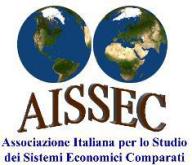By Giovanni Graziani, University of Parma
Tariffs generally tend to cause an increase in the import price of products. The increase in domestic price of imports may have four direct effects.
-
Trade contraction. By making the imported products relatively more expensive, the imposition of restrictions tends to reduce trade flows among the contenders (that’s why the restrictions were imposed in the first place!).
-
Export-re-direction. The imposition of tariffs prompts also a possible change of direction of existing trade flows. The first form that it takes is export re-direction, i.e. the imposition of a duty leads to a possible re-direction of the affected country’s exports to third markets.
-
Supply-switching. A third consequence is represented by supply-switching or import source diversion. The reduction of imports of the countries that have suffered tariff increases comes possibly in favour of other countries that were not affected by the protectionist measures.
-
Crowding out. Some of the “winning” countries’ exports may substitute some of the “losing” countries’ exports in the two contenders’ markets.
The analysis of the impact of the trade war shows which emerging countries could be defined as “winners” or “losers” in terms of increases/decreases of export flows in the short-term. It rests on monthly data of trade in goods derived from the US Census Bureau and the General Administration of Chinese Customs database. The two periods under comparison are January-July 2019 as against January-July 2018.
As expected, the tariff war was accompanied by quite a lot of reduction in the US-China trade flows over the period under consideration. US total imports from China went down by 9.1%. The decline was particularly sharp in all the groups of products on which tariffs were imposed. However, China appears to have succeeded in re-directing a substantial amount of exports away from the US towards other destinations. Moreover, in the short term, since the US and China charged higher tariffs on each other’s imports, companies had an incentive to replace these more expensive imports with products from other countries (supply-switching).
Within this process, there are countries which appear on the winning side in both the US and China’s markets. Mexico is the most important case, although much more skewed toward the US market. Argentina too, although at a lower level of trade. In Asia, Malaysia and, at lower level of trade, Bangladesh, Cambodia, Laos and Myanmar. In most cases, emerging countries seem to have gained in one market, while losing in the other. Vietnam is the most important case: it is the second greatest winner after Mexico in the US market, but somewhat losing in China’s market. A similar pattern of winning in the US market and losing in China’s market is followed by South Africa, Egypt and several Asian countries, like South Korea, Taiwan, Singapore, India, Pakistan, Thailand, Pakistan, Philippines and Sri Lanka. On the other side, Brazil and, at much lower level of trade, Colombia, appear to win in China’s market and lose in the US market. Only three countries seem to lose in both markets: Indonesia, Chile and Peru.
Finally, the “winning” emerging countries might not only substitute the two contenders’ exports, but also crowd out some of the “losing” countries’ exports. Although not directly measurable, such crowding out is particularly possible where the global gains of some emerging countries (the “winners”) are much higher than the losses of the other emerging countries (the “losers”), as it appears to be the case in the US market. On the contrary, in the Chinese market the global gains of the “winning” emerging countries appear to be lower than the losses of the “losing” emerging countries, leaving less room for the crowding out effect.









